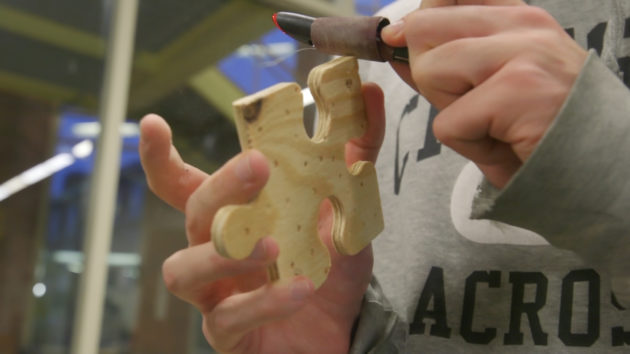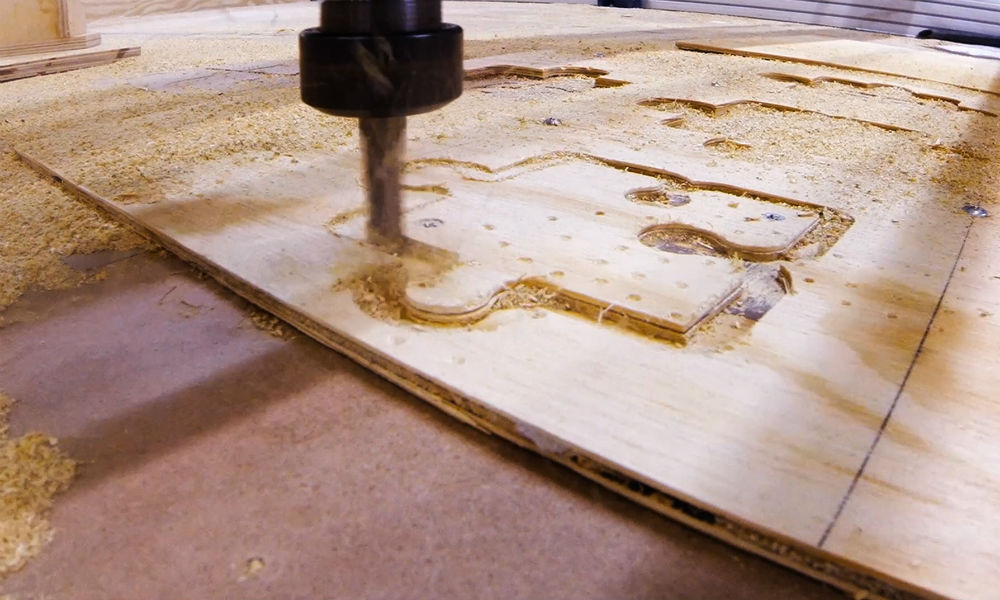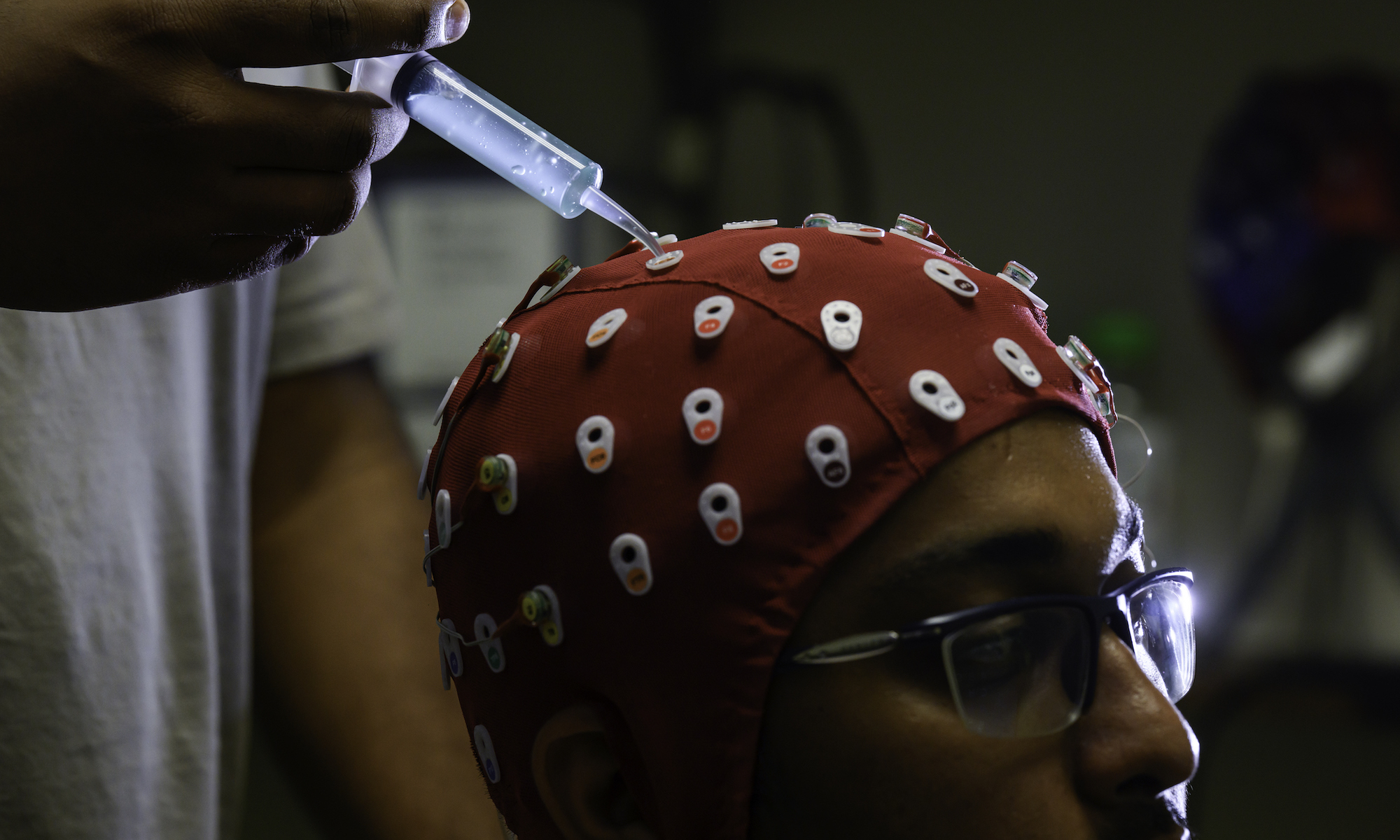As part of Chris Muir’s ME204 Senior Design class, students discuss various manufacturing processes and how to use the many tools available at the Fabrication Laboratory in Rettner Hall.
This fall, Muir developed an approach to teach students how to program a machine tool while working together on a joint project.
Although the students didn’t know what they were creating until the final week of class, each of them helped fabricate a unique puzzle piece using one of the computer numerical control (CNC) machines in Rettner. When put together, the puzzle, designed by Muir, ultimately formed an image of the iconic crown atop Rush Rhees Library.
CNC machine tools function through numerical control. To create the final puzzle, a computer program was customized for each object—in this case each of the 72 wooden puzzle pieces—and the machines control feed rate, location, and tool rotation speed.
Each puzzle piece was then identified with a number representing a position in the overall puzzle. In addition, each piece was given parameters to identify each of its four sides, so that a tab could be added, removed, or positioned to interlock with the next piece.
Once the part was populated with specifications, the student could write a program to fabricate the individual piece.
“It’s a metaphor,” said Muir, an associate professor in mechanical engineering who joined the University in 2014 after 18 years as a principal engineer at Eastman Kodak Co. “On a multi-disciplinary team, each member is expected to contribute with their specialty to the overall goal. If one member’s subsystem does not function properly, then the overall system does not work—same with a puzzle. You are responsible for not just your part but your interfaces as well. If you keep track of those, the system will work.”
Students came to the “fab lab” in early November, where teaching assistants Chris Dawson ’16 and Ryan Thomas ’16 oversaw the building of the puzzle.
“Number 66!” Dawson yelled out, and Catherine Yip ’17 stepped up while Thomas called up the program for her puzzle piece.

Before Yip’s part was cut, a stipple pattern was created with small drill holes on her piece. The drill-hole, or stipple pattern, is a function of a puzzle piece’s position in the overall image. A stipple pattern in this case was used to represent a halftone image as a collection of black dots, and the stipples eventually formed the image of the crown. The student’s program was then run to cut their piece from a slab of plywood. Students were told to sand the edges and fill in the dimples with a black Sharpie to raise the stipple pattern visually when the puzzle was assembled.
“I definitely enjoyed it,” said Yip, a mechanical engineering major from Covina, California. “I believe the benefit of of this project was being able to see how a CNC machine would cut the pieces and what the machine needed from us in order to perform the necessary cuts.”
In the final week of class, the students saw the 36-inch by 34-inch project come together.
“It’s pretty cool,” said Robert Gelfand ’17, a mechanical engineering major from Wyckoff, New Jersey. “Most of us have used various manufacturing processes, but this project showed it in a different way.”
The project only counted for a small portion of each student’s grade, but Muir said it was worth much more in terms of experience. “As usual, I learn a lot when I try something new like this, managing 72 different things with lots of opportunities for things to go wrong,” he said. “But I think the project was a success.”




